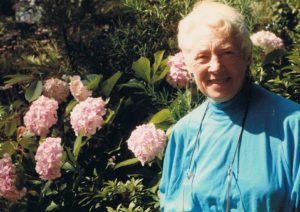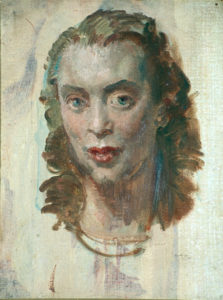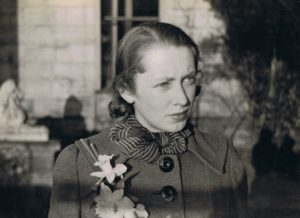Posts tagged Michelle Murch
Memories of Ria Murch
Apr 12th
Easter Sunday, 2020, during coronavirus lockdown.
It’s the perfect day to have driven north to visit Ria Murch at Avalon Beach.
A crystalline Autumn morning, with Summer not letting go and the leaves on my plane tree clinging on, still green and luscious.
Every inch of the road to Ria’s place carries me back not only to her, but to where I was born just a few houses down from her place. Over the Sydney Harbour Bridge, through manicured Mosman and down the sweep to the Spit Bridge. Through the Wakehurst Parkway with its wealth of ghost stories. And on to that glorious coast of wild, jutting headlands with profiles like ancient warriors, beautiful and cursed since that day when one of our schoolmates was swept off the rocks and his empty chair in our classroom would be a silent reminder of the ocean’s indifferent power.
Between Newport and Avalon you drive along the Bilgola Bends where the road snakes voluptuously along the coast. The bush tumbles thick and luxurious here, and lantana and salty air make your nostrils flare, wanting more. Ad hoc signs along the verges of the Bends are a local tradition. Welcome home Wazza. Happy 21st Macca. Cheerful reminders that you’re entering the Peninsula. The “insular peninsula” it’s been called. But it didn’t feel like that growing up there. It just felt like the most beautiful place in the world.
After the Bends, you drop down to the left and drive through the Avalon shops. Bill Mitchell’s corner deli still looks the same as it did in the 1970s, although the Italian fruit and vegetable shop in Avalon Parade is many decades gone. The owner Mr Taranto and his son Bob, always immaculately polite, wrapped everything in newspaper for Mum. Searl’s health food store was always a treat, with its glass-fronted wooden drawers full of cashews and pumpkin seeds.
Just a few minutes’ drive out of the village and you’re in Ria’s street. My old street. It’s just the same. The trees are tall and the modest little houses are enfolded in palm trees and bottlebrushes. There’s a famous stand of angophoras in an elbow of the road. Lots of kids lived in the street. In summer we danced about under the sprinkler on the grass out the front of our place. In winter, I remember, I loved seeing my distorted reflection in the concave back of the two-bar heater as Mum dried me down after a bath.
I must have been quite tiny when I first met Ria Murch and her artist husband Arthur. Their kids John and Michelle were too old for me to play with when we were all growing up, although I have since become good friends with Michelle. My parents were friends with the Murches, and Arthur (an Archibald Prize winner) painted my father Neville Fortescue for the 1955 Archibald Prize. The portrait still has pride of place in my home.
Arthur exerted a significant pull on me as a kid, given that he lived in the most extraordinary house. A typical Avalon fibro, it was as much studio as it was home. Half-finished sculptures peeked out of overgrown vines in the garden. A dead funnel web spider in a jar was among the mass of fascinating objects. There were paints and brushes, all in a kind of glorious disorder that immediately spoke to my heart of the wonderful things that were possible in life.
Arthur was always kind to me, teaching me a bit of drawing and, when I was a teenager, allowing me to come to his later studio in Artarmon where he made bread and we ate in happy companionship using newspaper as placemats. I remember Arthur asking whether I liked the sports or the crossword. When I was dropped off to the studio for my visit, a black dog was escaping out the front door with the loaf in his mouth. Arthur, in agitated pursuit, retrieved the bread and brushed it off. No problem. It was delicious.
Arthur died in 1989. By then I had been a journalist for over 10 years, and I wrote quite a few stories about Arthur’s life. More and more, however, my articles came to be about Ria and her quest to honour Arthur’s memory and his extraordinary life in art. She wrote a book about Arthur, and organised an retrospective exhibition of his work at the S.H. Ervin Gallery. She advocated for Arthur’s work, kept his legacy, organised his files, and championed his cause. Whatever she was doing, I always loved writing about it for the paper. (Michelle Murch has taken over the task of managing Arthur’s artistic legacy. Her website is arthurmurch.com)
Ria and I became fast friends. Lunch at her place was a treat, and was something my husband Stephen Gibbes and I always adored. Steve loved Ria, same as I did. You would park the car outside her house, and Ria would always be pottering about in the garden, waiting for you. Or she’d be in the kitchen, making something special. One day we had a gorgeous baked fish with vegetables, followed by baked apples and ice cream. Ria was never happy with her cooking. The fish was always “a bit dry”. But it wasn’t. She was a great cook, and lunch was always delicious.
Ria always had projects on the go. She shared them with you readily. Her epic struggles with her computer were laced with stories about keeping possums out of her roof and memories of Sali Herman’s peacocks straying into her garden and eating her flowers. Ria was never down-beat. Even after a nasty car accident in Avalon, she refused to dwell on her own situation. She always brushed aside her troubles, refusing to indulge them.
But she was a great listener, and loved hearing about what you were doing in your own life. What exhibitions had I seen? What did I think of such and such an artist? When I told her what I was writing about or planning to see, her words were always the same: “You go, girl”. Ria was always encouraging, having been a young journalist herself at one time, when she met Arthur.
She’d tell stories from her early years with Arthur, including how she fell in love with him when he was drawing the Russian ballet dancers at the Theatre Royal in Sydney. A young journalist, Ria was there to write about the touring ballet company. She had an immense knowledge of Australian art and, of course, of Arthur’s practice. It took me many years of listening to her, and reading about the things she told me, before I could get an understanding of what she was talking about. It was pure history. Gradually, I came to understand.
Nothing kept Ria down. She swam at Avalon Beach every morning. I remember her saying she couldn’t “stand” herself until she had done so. She was active in the Avalon community. In short, Ria was an inspiration to me and no doubt to many others. She died in her 90s in 2014. I attended the funeral service at Avalon Bowling Club, which was packed out with oldies, babies, and everyone in between. I made notes (journalists can’t help it) and I must find the shorthand scrawls where I recorded that important event.
It’s on days like this, when the fronds of the palm trees are gleaming in the sun out my window in the Inner West, that the Bilgola Bends beckon. A drive up north to see Ria would have been just wonderful.
Elizabeth Fortescue, April 12, 2020



